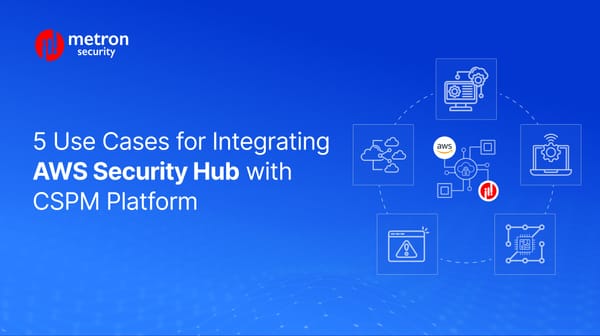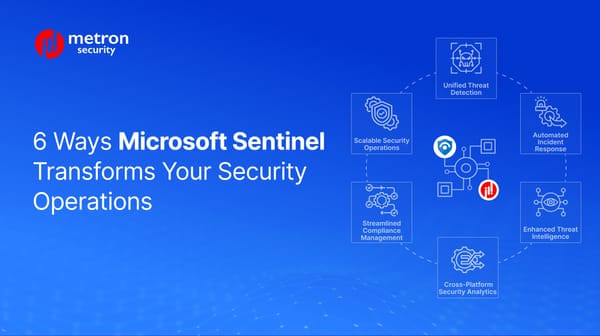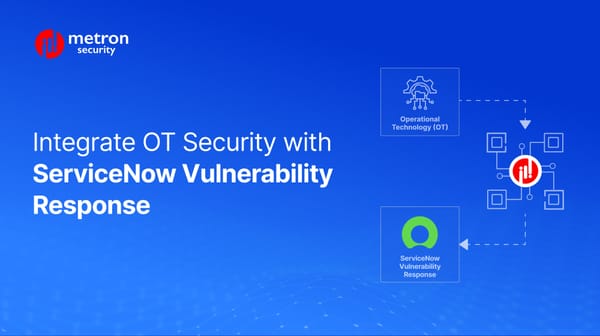OT Platform's Journey with ServiceNow: A Technical Deep Dive
Dive into the technical considerations for integrating OT platforms with IT systems.
Anmol Jain

Imagine a factory floor mapped out as a bustling city. The machines could be the buildings and city blocks; the sensors, the traffic cameras; and the control systems as the city planners.
Now, imagine what that city might be like if its planners couldn’t review the data from the traffic cameras. That's more or less how OT (Operational Technology) and IT (Information Technology) have functioned for most of recent memory.
Generally speaking, OT keeps the physical side of an organization running smoothly - whether that be industrial machines or building controls - while IT handles all the data, emails, and software that keeps the business side humming on the inside. In today's world, these two sides need to talk to each other.
Why, you might ask? Well, let’s return to our image of a factory. What happens when a machine on the floor starts acting differently than its normal behavior? Normally, a team tries to assess why this is the case, yet if the OT system can't communicate with the IT system it will take quite some time to identify the issue.
Scenarios like this can create plenty of difficulties, ranging from cost and possible loss of business. However, by converging OT and IT systems you might be able to avoid these dire straits entirely.
In the following post, we dive into the technical considerations for integrating OT platforms with IT systems such as ServiceNow Configuration Management Database (CMDB) and Vulnerability Response Management (VRM).
Why Connect OT Platforms with ServiceNow?
Normally, our machines (OT) and computers (IT) work separately. Connecting them, however, offers significant advantages:
- Enhanced Visibility: Connecting your platform with ServiceNow CMDB gives you a unified view of your entire operation. This lets you see how all your assets work together along with their dependencies, identify potential issues, and also provide optimized resource allocation across your entire IT and OT infrastructure.
- Streamlined Incident Management: Connecting OT and IT makes troubleshooting a breeze. You can pinpoint the exact source of problems, whether it's a machine or a computer issue. This minimizes downtime and enables effortless and faster resolution.
- Automated Workflows: This integration allows your systems to work together automatically. For instance, the system can automatically trigger actions to resolve issues upon detecting an OT anomaly without needing manual intervention.
The OT Integration Journey: A Two-Step Approach
The successful integration of an OT platform with ServiceNow involves a two-step approach:
Step 1: Establishing a Secure Foundation with CMDB Integration
The first step to integrating your OT platform with ServiceNow is establishing a secure connection between your platform and the ServiceNow CMDB. This step involves:
- Data Mapping: Define a robust data mapping strategy to accurately translate OT asset data (e.g., devices, sensors, controllers) into a format compatible with ServiceNow CMDB.
- API Integration: Leverage ServiceNow's APIs to establish a two-way communication channel between your OT platform and CMDB. This enables real-time data exchange for a continuously updated data record.
Note: We’ve written about this previously in more detail, so if you’re looking to learn more about how platforms integrate with ServiceNow CMDB check out our easy-to-follow ServiceNow Architecture guide.
Step 2: Empowering a Proactive Security Posture with Vulnerability Management
Once a solid CMDB foundation exists, you can leverage ServiceNow VRM to open the door to a proactive OT security posture.
For instance, integrating OT vulnerability data with ServiceNow VRM offers some of these powerful capabilities:
- Prioritized Threat Management: Vulnerability Response prioritizes vulnerabilities based on the criticality of OT assets and potential business impact. This allows OT security teams to focus on the most high-risk vulnerabilities first.
- Automated Workflows: Automate vulnerability scanning, patching, and reporting within the ServiceNow platform, ensuring a faster and more efficient response. This frees up valuable time for security personnel to focus on strategic tasks.
- Enhanced Collaboration: Vulnerability Response Management fosters information sharing and collaboration between OT and IT security teams. A central platform ensures everyone is on the same page regarding vulnerabilities and remediation efforts.
Conclusion
Connecting OT platforms with ServiceNow CMDB and Vulnerability Response bridges the OT-IT divide, enhancing visibility, streamlining workflows, and empowering a proactive security posture. By taking a technical approach with CMDB integration as the foundation, followed by Vulnerability Management integration, OT platforms can unlock the full potential of ServiceNow.
Metron Security provides on-demand and effective approaches to managing third-party integrations for security ecosystems. Since 2014, Metron has delivered automation solutions for over 200 security applications along with several hundred custom automation solutions - including ServiceNow CMDB and VRM.
If you are looking to set up any integrations with ServiceNow and are facing challenges, you can reach out to us at connect@metronlabs.com.









